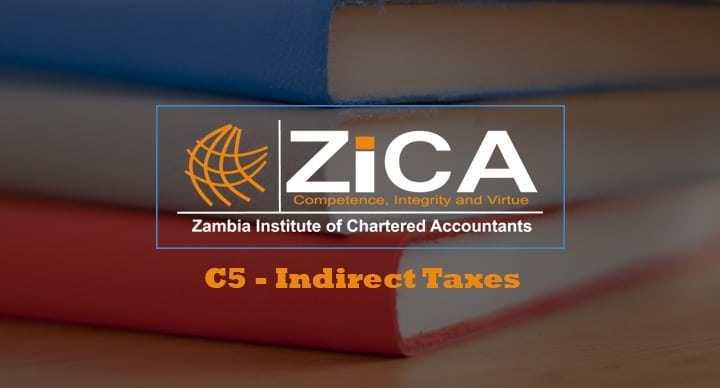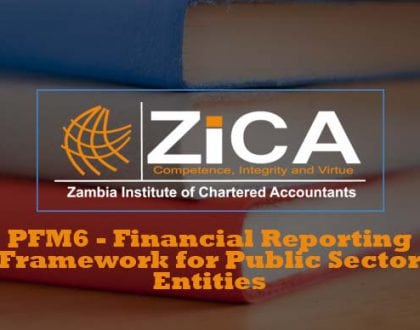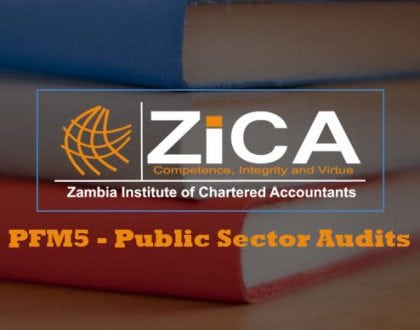C5-Indirect Taxes
No access plans exist.

Course Features
Course Details
C5-INDIRECT TAXES
This Paper introduces students to indirect taxation and covers aspects of Value Added Tax and Customs and Excise Duties and surtaxes.Objectives
A candidate who has successfully completed the subject should be able to:- Discuss the history and growth of Value-added taxes globally and the rationale for their adoption by governments internationally;
- Describe the ‘invoice based, credit offset, value-added tax’ model and the concept of ‘neutrality’ as that term is used in the VAT Act;
- Discuss the activities and transactions that represent practical difficulties in the operation of the ‘invoice based, credit offset, value-added tax’ model and describe the structural design features that lead to these difficulties;
- Give reasons why governments choose to exempt, zero-rate and treat as out of scope certain activities under a credit offset, invoice-based VAT; and
- Discuss the various issues pertaining to Customs and Excise Duties.
Structure of the examination paper
There shall be a three hour examination consisting of five (5) compulsory questions of twenty (20) marks each. Candidates will be allowed fifteen minutes’ reading and planning time.Detailed Syllabus
- UNIT 1 - VALUE ADDED TAX
- Element 1: Meaning of Value Added tax
- Element 2: How the VAT system works & Legislation for VAT
- Element 3: Arguments for and against VAT
- Element 4: Meaning of Supply
- Element 5: Determination of Taxable supply
- Element 6: Meaning of Consideration
- Element 7: VAT Registration & Deregistration Rules
- Element 8: Output Tax Element 9: Input Tax
- Element 10: Link between VAT and direct taxes
- Element 11: Partial Exemption Methods
- Element 12: Imports and exports
- Element 13: Special Schemes
- Element 14: Special Retailer Methods
- Element 15: Chain Transactions – Minimum Taxable Values
- Element 16: Reverse Charge VAT
- Element 17: VAT Control and credibility checks
- Element 18: Principle of Estoppel in VAT Cases
- Element 19: Leasing Transactions & Repurchase Agreements
- Element 20: VAT on Printed & Other Matter
- Element 21: VAT Refund Scheme for Tourists
- Element 22: Bad Debt Relief
- Element 23: Self Supply
- Element 24: Transfer of Business as a Going Concern
- Element 25: Correction of Errors
- Element 26: Misdeclaration
- Element 27: Late Registration and unauthorized issue of VAT Invoices
- Element 28: VAT Penalties & Interest
- Element 29: Appeals & Requests for Review
- UNIT 2 – SPECIFIC SECTOR VALUE ADDED TAX
- Element 1: VAT Considerations in the Mining Sector
- Element 2: VAT Considerations in the Agriculture Sector
- Element 3: VAT Considerations in the Tourism Sector
- Element 4: VAT Considerations in the Telecommunications Sector
- Element 5: VAT Considerations in the Banking & Financial Services Sector
- Element 6: VAT Considerations in the Construction Industry
- UNIT 3 - CUSTOMS AND EXCISE DUTIES
- Element 1: Introduction to Customs & Excise Duties
- Element 2: Functions of the Customs and Excise Division
- Element 3: Powers of ZRA Officials
- Element 4: Official and Commercial Documents
- Element 5: Determination of value for Duty Purposes
- Element 6: Valuation Element 7: Clearance.
- Element 8: New Residents Rebates
- Element 9: The African Growth and Opportunity Act (AGOA)
- Element 10: International Trade Agreements
- Element 11: Preferential Trade Agreements
- Element 12: Exportation of Goods
- Element 13: Excise Duties
- Element 14: Bonded Warehouses
- Element 15: Currency Declaration
- Element 16: Surtax on Carbon Emissions
- Element 17: The COMESA Customs Union
- Element 18: Overlapping Membership of Regional Tax Groupings
- UNIT 3 - EXPORT CONCESSIONS
- Element 1: Introduction
- Element 2: Duty Drawback System
- Element 3: Basis of Payment
- Element 4: Challenges of the duty drawback system
- Element 5: Calculation of Coefficients for Duty Draw Back
- Element 6: Zero Rating for Exports
This course does not have any sections.





